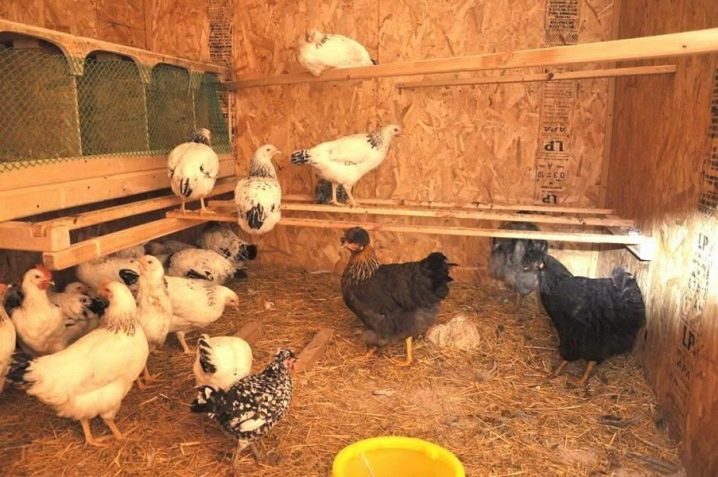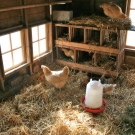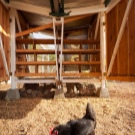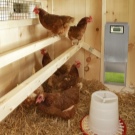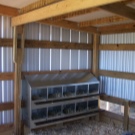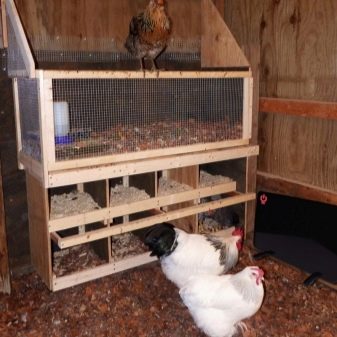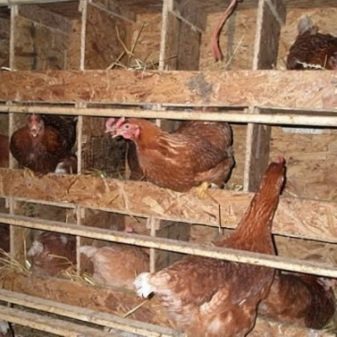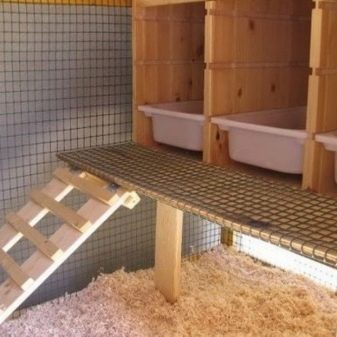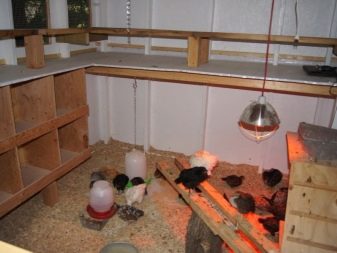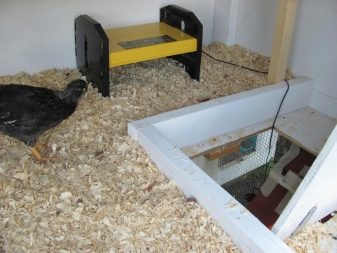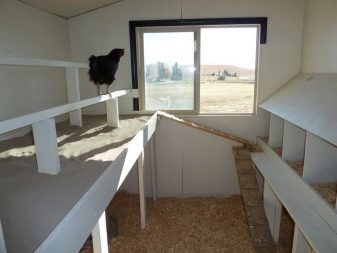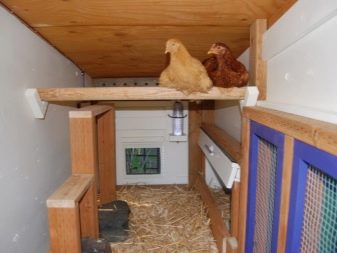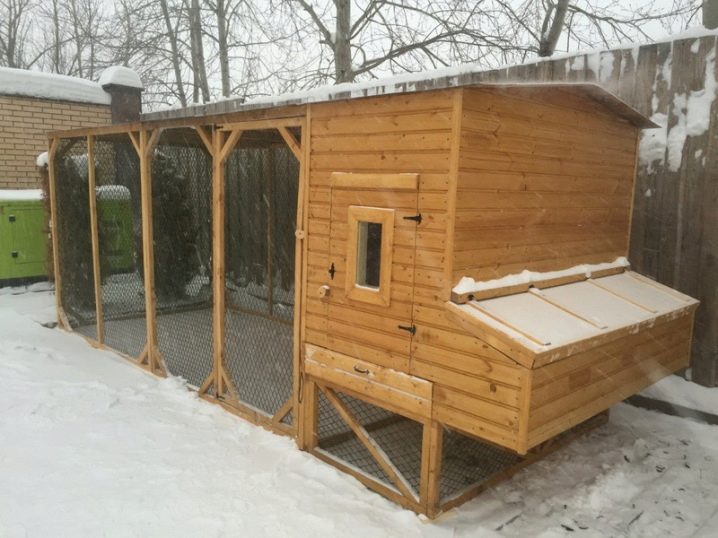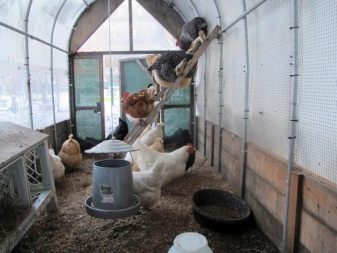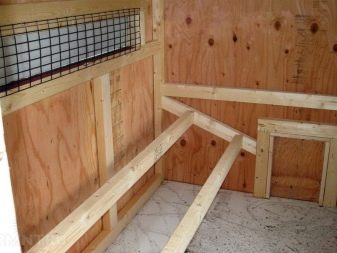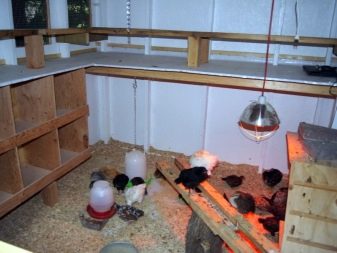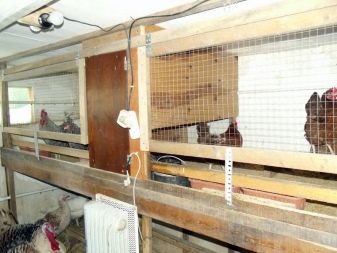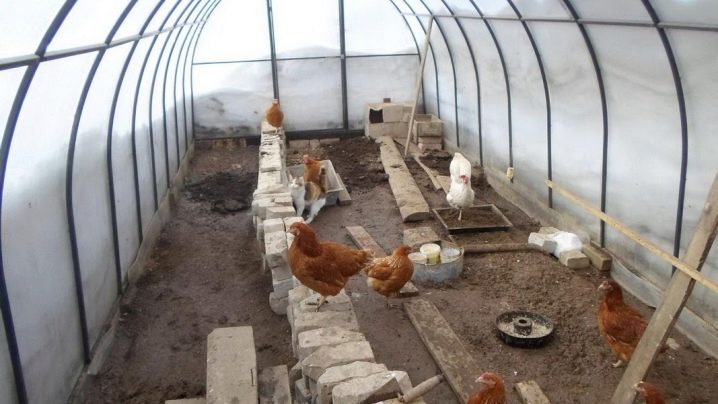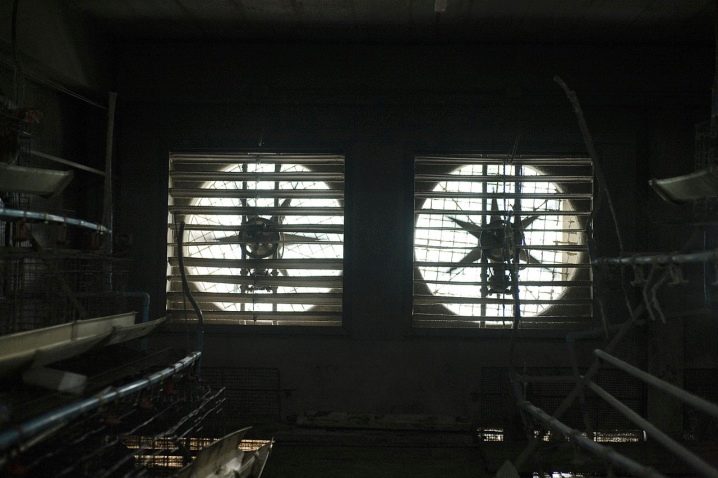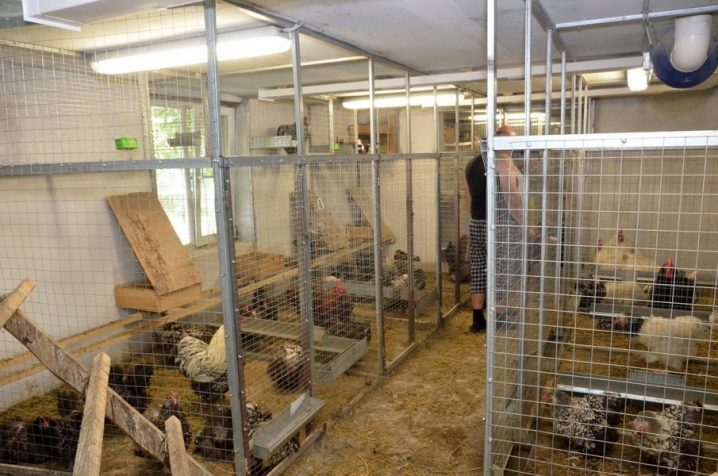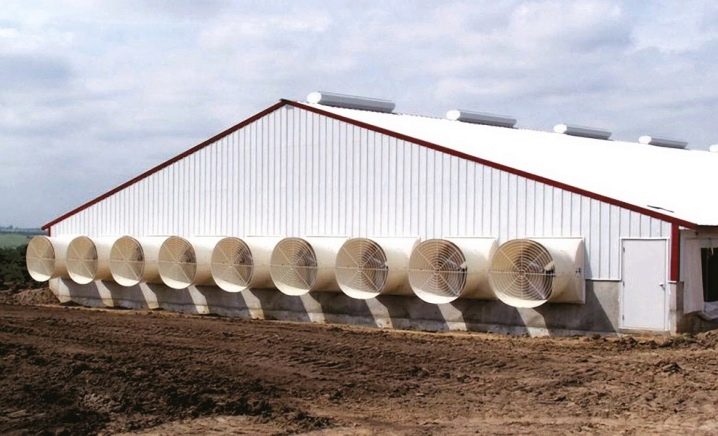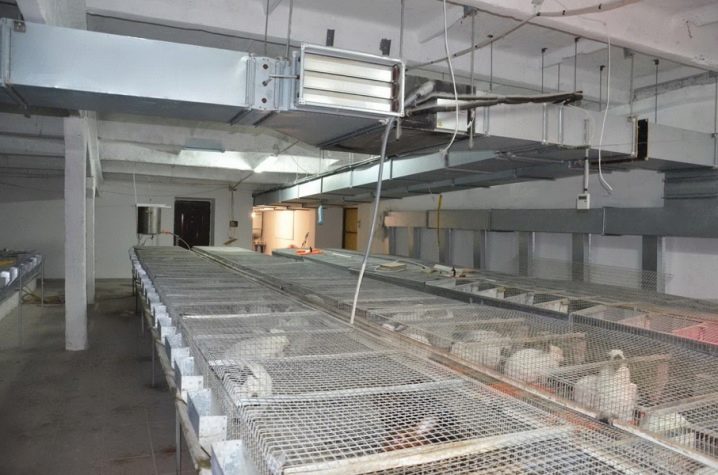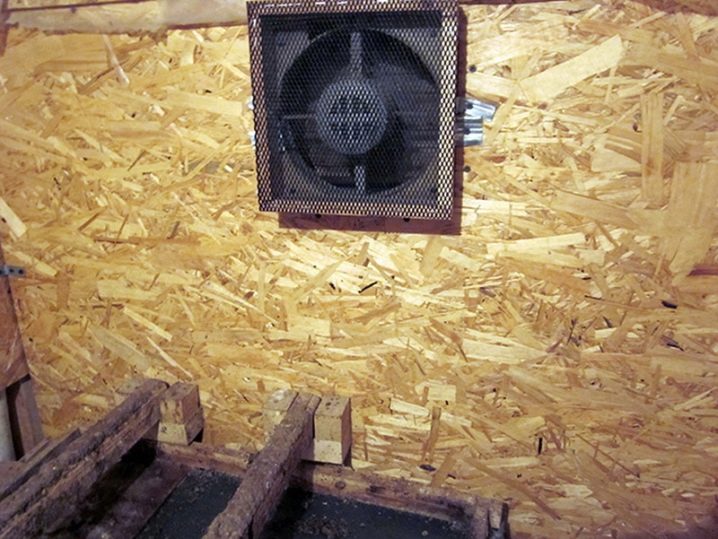How to make ventilation in the hen house with your own hands?
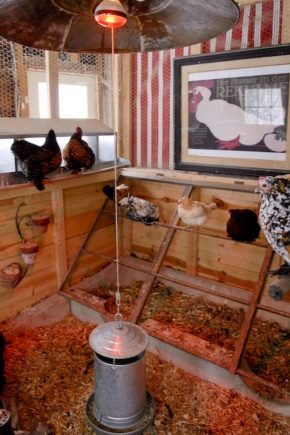
What does a breeder want to get when starting to breed chickens? Naturally, many eggs are expected from laying hens and broiler meat gains. Novice poultry farmers sometimes do not suspect what obstacles they will need to overcome before optimal conditions for keeping chickens are reached. To engage in the breeding of poultry, and especially chickens, is to provide oneself with constant efforts in order to achieve the greatest return. To achieve good results, it is necessary to maintain cleanliness and order in the house.But this, of course, will not be enough. It is important to prevent air from stagnating in the hen house, especially in cold weather.
The products of vital activity of the bird emit ammonia vapors, which extremely negatively affect the health of chickens. Therefore, it is worthwhile to consider in more detail the options for the construction of ventilation and how to install it in the hen house. First of all, it is necessary to ensure the proper functioning of the ventilation system.
The judgments are wrong that in order to create a hood it is enough just to drill a few holes. The chicken is an unpretentious bird and everyone who lives in the countryside or on a private farmstead contains this bird. Despite the fact that chickens can be kept without special conditions in a small hen house, experienced breeders try to provide ventilation taking into account all the peculiarities of the room and the number of poultry.
What is ventilation for and what is it?
Ventilation of the room is designed to provide the necessary air exchange, that is, clean, fresh oxygen should come to replace the stagnant air.
The reasons for which ventilation is necessary in the jacket:
- As already mentioned, bird droppings are able to release ammonia.Unpleasant smell in the room - this is only half the trouble. Vapors of this gas can harm the body of a chicken, causing severe poisoning. Yes, and the owner of the house may have problems with well-being after a long stay in an unventilated room. Most of the ammonia accumulates in the winter, when the owners close up all the cracks, retaining heat.
- Ventilation of the chicken coop allows you to adjust the level of humidity. Excessively dry air is harmful to the bird, as well as too humid. The greatest concentration of humidity is observed in cold weather, when there is an intensive release of moisture from the litter, as well as evaporation of water from the drinkers. Dryness in the room occurs during the summer heat. The ventilation system is able to adjust the optimal climate balance in the chicken coop, which has a very beneficial effect on the health of the bird.
To achieve the best results in the operation of the ventilation system, it is necessary to memorize several important rules.
- The amount of oxygen should be sufficient for each bird. The larger the population of chickens, the more you need clean air. Get an excellent result can only be a competent selection of equipment for the installation of the hood.
- The ventilation process must be regulated in order to avoid the danger of the bird freezing. To do this, it is enough to supply all air ducts with flaps that allow the inflow of air in small portions.
- The hood must not only change the air quality in the hen house, but at the same time also keep the heat. In cold weather, air supply ducts are usually closed with a fine-mesh mesh. Well, during strong frosts the air supply is completely blocked.
It is impossible to achieve the desired efficiency of the ventilation system if the room is not kept clean. Poultry waste emit so many vapors that with caustic fumes it is sometimes impossible to cope with forced extraction with powerful fans.
Device and species
In most cases, in the chicken coop is mounted the simplest hood or intake-exhaust design. Both options do not require high labor costs, and it will be easy for the poultry farmer to do all the work independently. In some cases, poultry breeders prefer the installation of a supply and exhaust system, which is generally considered to be more efficient and at the same time simple to install.A more expensive type is mechanical ventilation, installed in spacious rooms where there are a lot of birds. On the main types of structures it is worth staying in more detail.
Natural ventilation
If the area of the room where chickens are kept is not very large, then in this case you can use the simplest method of through ventilation. This is a fairly inexpensive and primitive version of the air exchange equipment in the hen house. To do this, it is necessary to make small ventilation holes in the walls; Well, the ideal solution would be the presence of windows or vents in the room. Holes above the door do an excellent job with the flow of incoming air, breaking it into small twists, thereby reducing overall cravings. Small windows or vents also provide excellent ventilation. Such a well-organized type of ventilation can save livestock from strong drafts.
In the cold season, the use of such ventilation will not be very profitable, as in this case, the cost of heating the chicken coop will be added. In the summer, on the contrary, windows are not only an element that ensures the flow of clean air,but also a source of natural light. Chickens, as it turned out, prefer to rush only during daylight hours.
Supply and exhaust system
This method of ventilation is considered to be a more thorough and effective option, in addition, the whole structure can be made by hand. The principle of operation of such a system is based on the creation of an exhaust hood and an inflow of air mass. Before starting installation work, it is advisable to pre-arrange the layout of exhaust and air inlets in order to avoid unnecessary alterations in the future.
The principle of arrangement of ventilation is as follows.
- It is necessary to purchase two plastic pipes with a length of no more than two meters and a diameter of no more than 20 cm.
- Then holes are made in the roof along the width of the pipes. One of the holes should be located directly above the roost, and the other in the area where chickens are the least.
- The pipe, which is supposed to pull out poisonous vapor from the nests, should be raised to a height of about one and a half meters from the roof. At the same time, it should be down in length about 30 cm. At the top of the pipe, you can install a deflector that will cut the wind flows in its direction, thereby increasing the thrust of the exhaust air duct.
- The second pipe is located 20 cm from the floor, as this is required for the inflow of clean air into the room.
- Outside the pipe, it is desirable to protect from precipitation.
- If all the work will be done correctly, then this ventilation option will completely eliminate heat loss in the chicken coop.
This method of ventilation is available in the cold season, with, in particular, the following advantages:
- smooth operation without human intervention;
- no electricity charge;
- The system works silently and perfectly copes with its responsibilities.
Some poultry farmers put the fan in the exhaust pipe, which helps to activate the movement of air masses.
Mechanical or forced ventilation
This method of airing the room is suitable for chicken coops with a vast area and a large population of birds. In this situation, the problem with airing cannot be eradicated only by installing windows or air vents. The purchase of an axial type fan, which is fixed inside the window, will help to find a solution. This type of ventilation is sometimes called combined.
For large farms, there is another ventilation pattern using industrial fans:
- First of all, it is necessary to calculate in advance the size of the coop;
- Summarizing the results obtained, it is necessary to calculate the optimal amount of air that will be required for comfortable life activity of the bird;
- after all the calculations are completed, you can get to work;
- In the walls of the chicken coop, opposite to each other, powerful industrial-purpose fans are mounted;
- from the fans it is necessary to bring the pipes out of the room;
- The system is ready to work. One of the devices is responsible for the flow of air, the second - for the hood. At the same time, air mass circulation is formed inside the chicken coop, the extra volume of which will be moved outside the borders of the chicken coop.
This method of airing can be very expensive, so it makes no sense to apply it on private farmsteads. The effectiveness of simple methods of ventilation is no worse.
Professional Tips
Any inexperienced master can allow typical errors in the installation of ventilation. If the construction works in such a way that it is absolutely impossible to get rid of stale air or the room is rapidly cooled, it means that an oversight has crept in when drawing up the scheme. When planning and subsequent installation of the system, you need to correctly position the flow of air masses and calculate the stability of the assembled structure.
Check the effectiveness of the ventilation system is not difficult, for this you need to go inside and spend some time there. If during the past period there is no lack of oxygen and the headache does not start, then the ventilation is working properly. Otherwise, you have to change something in the design. Thus, it becomes clear that the ventilation of the chicken coop is designed to ensure the influx of clean air and regulate the level of humidity and temperature.
To reduce energy costs, which will still appear, the design is supplied with sensors that exercise automated control over air temperature and humidity. In this case, the start of the ventilation system occurs only when the climate parameters in the chicken coop change. This option is also ideal for chicken coops that have a fermentation litter as a floor covering, since bacteria produce a large amount of heat when processing litter and food debris. Excessively high temperature in the room can adversely affect both the health of chickens and the vital activity of microorganisms living in the coating.
Typical errors during installation.
- Air vents are located on adjacent walls from each other. In this case, air mass stagnates aside in front of the walls, since it cannot circulate at a right angle. If the room of the chicken coop has the shape of a rectangle, then it would be correct to arrange windows or openings on walls of shorter length opposite each other.
- A strong hum when working fans. Before installation, devices should be checked for noise. Chickens are very sensitive to loud sounds and being frightened, they can reduce egg production or stop rushing altogether.
- Weak structure construction. Very often the shaky ceilings of erected chicken coops break under the weight of heavy iron ducts. This is typical of wooden buildings having, at first glance, a strong ceiling, but able to completely rot through a few years. Therefore, it is desirable to fasten metal pipes at the rafters.
- Metal pipes must be insulated with mineral insulating materials during the cold season. Having excellent thermal conductivity, the metal can in the shortest possible time to turn the coop into a refrigeration chamber, even with closed valves.At the same time, constantly forming condensate is able to freeze, blocking access to air.
In order for the airing system to function properly, that is, to provide the coop with fresh air, without creating drafts and stagnation, it is necessary to adhere to the conditions below.
- Periodically it is recommended to clean the chicken coop from litter, remnants of undernourished food and dirty water. Cleanliness in the room where the bird is kept should be prioritized.
- It is regularly required to check for the presence of small animals, rodents and their destruction. The presence of strangers can cause disturbance to chickens and excessive air pollution. In some cases we can talk about the spread of various diseases.
Any owner of the chicken coop individually makes the decision to install ventilation and ventilation systems. Many people do not even think about setting up a chicken coop until they encounter frequent diseases of the livestock or its massive death. Only when confronted with an unpleasant situation, poultry houses begin to choose between natural or forced-air ventilation,in the future building it without much effort.
For information on how to do ventilation in the hen house with your own hands, see the following video.
